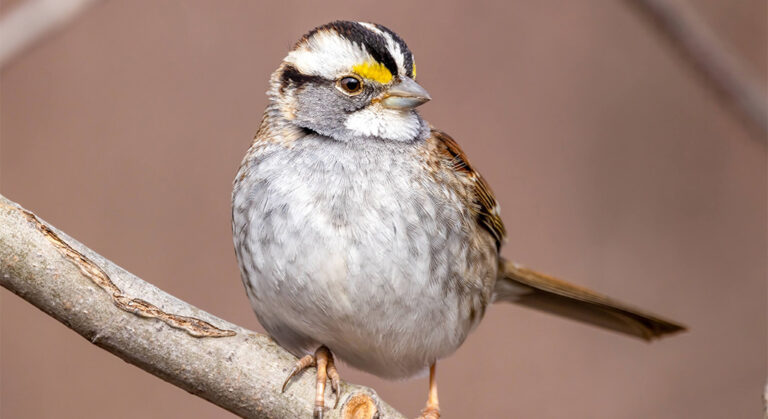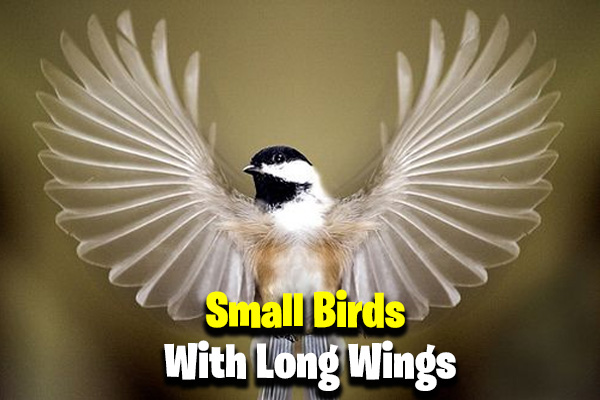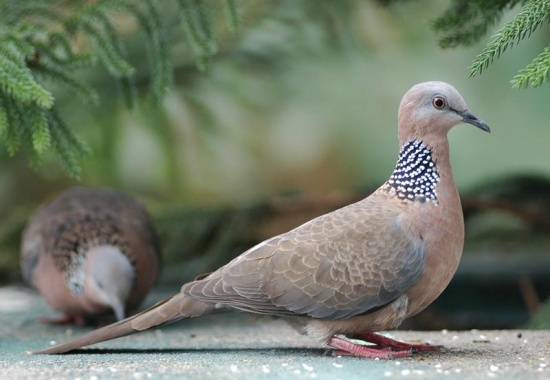Are Red Peacock Real or Fake? Find Out Here!
Understanding the Myth of the Red Peacock
The red peacock myth has caught the eye of many. It makes bird lovers and casual watchers curious. People often ask, are red peacocks real? This question comes from seeing colorful birds in social media and videos.
The story of red peacock mixes old tales with made-up stories. These stories are interesting but not based on science. Often, the pictures we see of these birds are edited. They make the peacocks look more colorful than they really are.
The red peacock myth leads to wrong ideas. People think the exciting stories they hear are true. It’s important to know the difference. We should separate the stories from the real facts about peafowl known to bird experts.

Different Species of Peacock
Exploring peacocks shows us the variety of species. Each one has its own look, behavior, and home. The main species include the Indian Peafowl, Green Peafowl, and Congo Peafowl. They show us how different peacocks can be.
The Red peacock is a disputed bird species with no genetic evidence or scientific research to suggest that it is a genuine peacock species. Because we have credible scientific and biological data for the peacock family, it is unlikely for the red peacock to be a legitimate member of this group.
Indian Peafowl
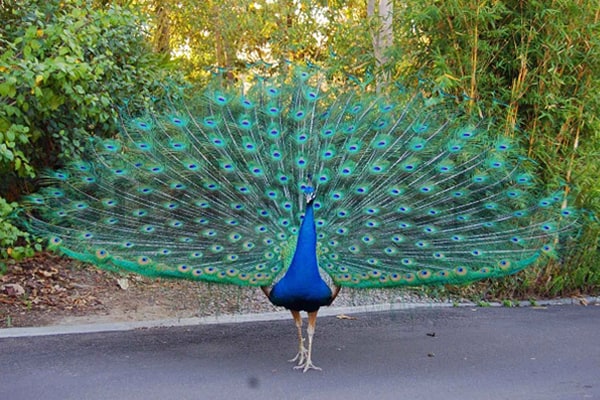
The Indian Peafowl, also known as the common peafowl, is noted for its long, showy tail feathers adorned with distinctive, iridescent blue-green markings. The male Indian peafowl can grow up to 5 feet in length, and its tail feathers can reach up to 6 feet in length. The female Indian peafowl, or “peahen,” is seen with muted brown-colored feathers, but she also has a small fan of blue-green feathers on her head.
Congo Peacock
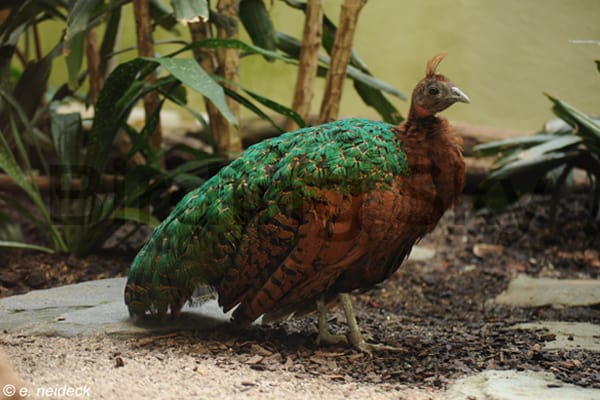
The Congo peacock, on the other hand, is the smallest of the three members of this bird family. The natural habitat of this peafowl species is the lowland rainforests of Central Africa. The male Congo peacock is easy to identify, thanks to its shimmering, bluish-purple crest and metallic green plumage.
Green Peafowl
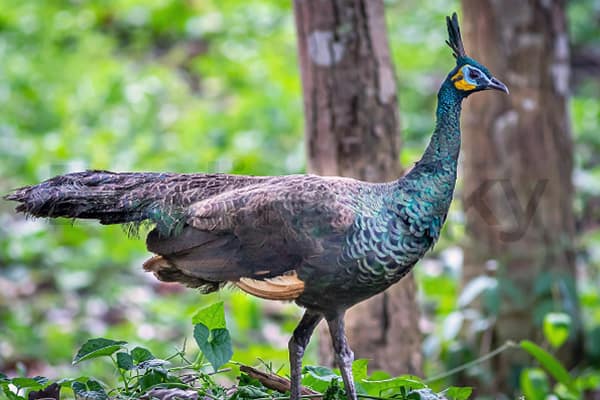
The Green peafowl is the largest and rarest of the three peafowl species. Its natural habitat is in the Southeast Asian wetlands. Both male and female green peafowl have the same green iridescence in their plumage as the male Indian peafowl, but they are larger and have a more robust gait.
By understanding the distinct characteristics of these peafowl species, we can conclude that the red peacock is, indeed, a mythological creature that has captured the hearts of bird enthusiasts across the world.

The peacock is an auspicious bird with gorgeous, brilliant feathers. It has an extremely good meaning and has been favored by many people. If you also love this species, it is a good choice to have a peacock feather as a decoration or give it to your loved one. You can also design peacock-themed custom pins, hair accessories, and other accessories to let peacocks into your lives.
Do Red Peacocks Really Exist?
Many people are curious about red peacocks. They wonder if these birds with bright red feathers really exist. To find out, we look at what people say and what science knows.
Eyewitness Accounts and Reports
Many say they’ve seen red peacocks in different places. They talk about birds with bright, fiery feathers. These stories tell of sightings in gardens and forests.
But, these stories don’t always have proof or a clear story. This makes people even more curious about red peacocks.
Scientific Studies on Color Variations
Scientists are studying peacocks to understand their colors. They look at genetics, pigments, and light. Sometimes, the environment can make peacocks look different.
Scientists hope to answer questions about red peacocks. They want to learn more about peafowl colors.
| Account Type | Description | Location |
|---|---|---|
| Eyewitness 1 | Bright red plumage, described as vibrant. | Garden in California |
| Eyewitness 2 | Seen with golden accents, captivating colors. | Forest in Florida |
| Eyewitness 3 | Mention of a flock, unusual behavior noted. | Park in Texas |
The Science Behind Peacock Colors
Peacock colors show nature’s beauty, thanks to pigments in their feathers. These pigments, like carotenoids and melanins, make their feathers bright. Carotenoids give yellow, orange, and red colors. Melanins add black and brown.
Role of Color Pigments in Feathers
Peacock feathers have a special structure that affects how we see colors. Pigments give basic colors, but structure is key too. Light bends and spreads in the feathers, making certain colors stand out.
This process makes the peacocks’ blues and greens so bright. It shows how pigments and structure work together to create their colors.
Genetic Mutations and Color Variations
Genetic changes affect peacock colors a lot. These changes can make new colors appear. They can bring colors not seen in usual peacocks.
This adds to the beauty of peafowl, making their colors even more varied.
How Many Colors Do Peacocks Come In?
Peacocks are known for their stunning tails and bright colors. You might ask, how many colors do peacocks have? They come in many shades, each breed showing its own unique colors. It’s important to know about these colors for fans of peacocks.
Overview of Common Color Varieties
The most common peacock colors are:
- Blue
- Green
- Bronze
- White
- Black-shouldered
The Indian Peafowl is the most common type. Its bright blue color is famous. It shines with other colors that many find captivating.
Unique Mutations and Their Rarity
There are also rare peacock colors from genetic changes. Some examples are:
- Cameo
- Silver
- Turquoise
- Purple
These colors come from genetic changes and careful breeding. Breeders work to create these unique colors. Seeing these colors in the wild is rare, so they are very popular with collectors.
| Color Variety | Rarity | Notable Features |
|---|---|---|
| Blue | Common | Brilliant sheen and often a striking tail display. |
| Green | Common | Unique green tones, particularly seen in the tails. |
| Cameo | Rare | Soft blend of lighter colors, akin to pastel shades. |
| Purple | Rare | Deep, rich hues rarely seen in nature. |
Are Yellow Peafowl Real?
Many people are curious if yellow peacocks really exist. They are different from the usual blue and green peafowl. This section will talk about yellow peafowl and why they are special.
Overview of Yellow Peafowl
Yellow peafowl are known for their bright plumage. Their colors range from pale cream to deep gold. This makes them stand out and many ask, “Are yellow peacocks real?” Yes, they are real and rare because of their genetics.
Collectors and breeders look for yellow peafowl. They find beauty in their color and the way their tail feathers shine.
Genetics Behind Yellow Variants
The genetics of yellow peacocks are complex. Their yellow color comes from genetic changes. These changes affect the pigments in their feathers.
Breeders work to keep these traits going. This makes more vibrant yellow peacocks. Each yellow peacock is unique, showing nature’s creativity.
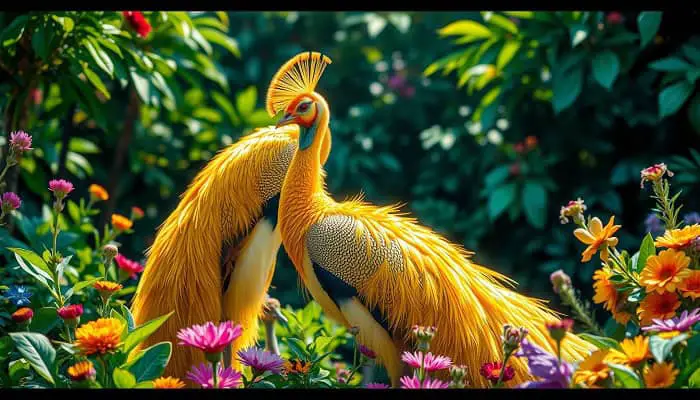
Do Female Peacocks Have Colorful Feathers?
The female peacock, also called the peahen, has a beauty that is often overlooked. When you look at the colors of the female peacock compared to the male, you’ll see a big difference. This plumage comparison shows how unique they are and why they look the way they do.
Comparison of Male and Female Plumage
Male peacocks have stunning feathers that shine with bright blues and greens. They use these colors to attract mates. On the other hand, female peacocks have more subdued colors like browns and tans. These female peacock colors help them hide from predators.
- Male Peacocks: Vibrant and colorful with elaborate patterns.
- Female Peahens: Subtle colors with intricate markings that offer protection.
- Behavioral Differences: Males engage in elaborate courtship displays; females focus on nurturing.
The peacock and peahen show us how nature balances beauty with survival. Each type of plumage is crucial for their survival.
The Rarity of White and Other Unique Peafowls
White peacocks are truly a wonder in the world of birds. Their stunning looks grab the attention of bird lovers and those who just pass by. The reason they are so rare is due to their genetics, especially albinism and leucism. These conditions make them stand out in a big way.
Understanding White Peacocks and Albinism
Albinism in white peacocks means they lack color, unlike leucistic birds. Albino animals are fully white with red or pink eyes. But white peacocks have blue eyes, showing they are different. This makes them even more rare and special.
These birds also don’t show the bright colors their normal friends do. They remind us of the amazing variety in nature’s genes.
Rare Mutations in Peafowl
Peafowl mutations make these birds even more interesting. There are many colors and patterns, including the rare white peacocks. Some other unique peafowl include:
- Silvery Green Peafowl: This looks green with silver undertones.
- Cold Water Blue Peafowl: Known for its bright blue color.
- Black-Shouldered Peafowl: These have dark feathers and shine with iridescent colors.
These mutations add to the peafowl’s beauty and show how rare white peacocks are. They are part of a unique group.
| Type of Mutation | Characteristics |
|---|---|
| White Peafowl | Completely white feathers, blue eyes |
| Silvery Green | Greenish plumage with silver undertones |
| Cold Water Blue | Shiny blue feathers, highly reflective |
| Black-Shouldered | Dark feathers with iridescent colors |
The Appeal of Peacock Feathers in Culture
Peacocks are important in many cultures. They symbolize beauty, pride, and new life. Their feathers are used in art, fashion, and traditions around the world. It’s interesting to see how these colors and patterns mean different things in different places.
Symbolism of Peacocks in Various Cultures
Peacocks mean a lot in many cultures. They stand for different values and beliefs. Here are some examples:
- Indian Culture: In Hindu stories, the peacock is linked to Saraswati, the goddess of wisdom and knowledge.
- Middle Eastern Traditions: The peacock symbolizes beauty and pride, showing nobility and royalty.
- Chinese Beliefs: Peacocks bring good luck and wealth, often seen in art and buildings.
Use of Peacock Feathers in Decoration and Art
Peacock feathers are used a lot in decoration and art. They have bright colors and detailed patterns. This makes them popular with artists and makers. You can see peacock feathers in:
- Fashion: Designers use peacock feathers in fancy outfits and accessories.
- Home Decor: People add peacock feathers to centerpieces, wall art, and decorations.
- Craft Projects: Crafters use peacock feathers for DIY projects, adding creativity and beauty.
Looking into peacocks shows their big impact goes beyond their looks. Their symbols and feathers are loved and honored all over the world.
Conclusion
In this journey, you’ve learned about the red peacock’s mystery. These birds capture our imagination but lack scientific proof. Their bright colors, especially the male Indian peafowl, fascinate us.
As science moves forward, we’ll learn more about peacocks and their colors. Discoveries might show us peacocks in new colors we’ve never seen before. This shows us how amazing nature is.
The peafowl world is full of beauty, from the Indian peafowl’s green to rare white ones. There’s still so much to discover in the bird world. Keep being curious, many secrets are waiting for us!
~Our Recommended Articles To Read~
- Black Birds in Michigan
- Woodpeckers in Michigan
- Sparrows in Ohio
- Red-Headed Birds of Hawaii
- Black Birds With Orange Wings
- Blue Bird With A Red or Orange Chest
Frequently Asked Questions About Red Peacock’s Existence?
Q1: What is the real peacock color?
The real color of a peacock is a combination of iridescent blues, greens, and purples.
Q2: What is the rarest peacock color?
The rarest peacock color is considered to be white.
Q3: Are peacock feathers real or fake?
Peacock feathers are real, and known for their vibrant colors and distinctive eye markings.
Q4: Is the White peacock real or fake?
The White peacock is real, and its coloration is due to a genetic mutation.
Q5: Is the peacock male or female?
The term “peacock” typically refers to the male bird, while the female is called a peahen.
Q6: Is there a blue peacock?
Yes, the Indian Peafowl, or common peafowl, has a blue peacock variety with vibrant blue and green plumage.
Q7: Is peacock color blind?
There is no evidence to suggest that peafowls are color blind. They have keen eyesight and can perceive a wide range of colors.
Q8: What is a female peacock called?
The female peacock is called a peahen.
Q9: Is the color peacock blue or green?
The color of a peacock is a combination of blues and greens, and the specific shades can vary among individual birds.





